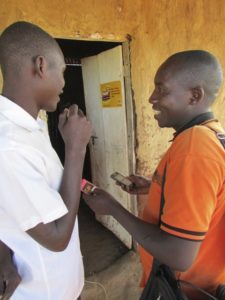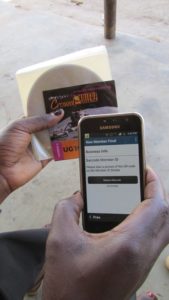
Search
The thing that surprised me most about starting a mobile payments business in East Africa was how it was the little details that could kill you – especially when it came to managing field agent networks.
In 2013 and 2014, I started the Tanzania subsidiary of Kopo Kopo, a Kenyan mobile payments startup that acquired merchants to accept consumer-to-business payments using mobile money service M-PESA and Tigo Pesa. We invested a lot of time and money to acquire restaurants, hotels, bars and other businesses, and we watched their transactions closely. Occasionally, an active merchant would stop transacting. When our best merchant stopped, I sent our sales manager to find out why.
Were they dissatisfied with payment acceptance through our system? Nope, they loved it.
Did they have problems settling money to their bank account? No, that worked well too.
Had a competitor offered them better terms? No – they hadn’t talked to anyone else.
Then why had they stopped using it? “Well, the power cord for the mobile phone that received transaction confirmations broke and we don’t know where to buy a replacement.”
So our sales manager took a 5 minute boda boda ride to a nearby market and bought them a new one.
You can bleed to death from a thousand tsetse fly bites on the savannah of East Africa business and no one will hear you scream.
The lesson we learned? You need to create systems to support field agent networks to take care of the small details that can derail use of your product or service. If you don’t, your customers will suffer no matter how much you invested in hardware, software and systems.
 Field Agent Uganda. Source: Peripheral Vision Intl
Field Agent Uganda. Source: Peripheral Vision Intl
I was reminded of the importance of having field agent networks focus on the customer experience during a recent webinar TaroWorks hosted with Gregory Makau, IT Manager for the microfinance institution (MFI) Musoni Kenya and Antonique Konig, Financial Sector Specialist at The Consultative Group to Assist the Poor (CGAP).
Antonique pointed out that the low number of active accounts is a serious problem for microfinance institutions and mobile money networks.
“Technology has revolutionized financial services ..[But] There is still a big problem with usage. Many of the [MFI] accounts that are opened are dormant, insurance policies lapse, and mobile wallets are inactive … [The GSMA reports that] 63% of [mobile wallet] accounts are used less than once in 90 days. Which does not show a lot of activity and relevance in poor people’s’ lives … For financial services providers there is an opportunity with the further use of technology and digitization to turn that around … and to focus more on the people to become more customer centric rather than product centric.”
Many MFI organizations now understand the benefits of digitally collecting financial KYC documentation and “onboarding” customers into using mobile tools rather than in paper hard copies. And most of the core banking vendors, and some clever startups like First Access, which provides MFIs with alternative data for credit scoring, are developing tools to create customer accounts using mobile phones.
But few MFIs that I have spoken to have given much thought to creating tools to help support field agent networks so they can manage their own business processes. An experienced, Ugandan-based financial inclusion consultant put it to me this way:
“The banks all have systems for setting up an account or starting a loan application at a correspondent banking agent. But none have built systems to help their managers help when an agent runs out of thermal printing paper for his receipt machine. They’re relying on that manager to remember to bring thermal paper with him on his next trip, which he may or may not do and which may not happen for another three weeks anyway! So usually that agent won’t be able to print receipts for months because there is no systematic way to keep track of that need and send someone to fix it.”
Peripheral Vision International (PVI) learned the lesson that how people use your technology is as important as the technology itself when they rolled out barcode tracking in Uganda.
PVI is a social enterprise that created a DVD advertising network in Uganda. PVI field agents distribute free DVDs to Ugandan movie halls containing a mix of new music videos and advertising messages from health programs, government agencies, NGOs etc.
In order to begin working with larger advertisers, they needed a better system to track the demographics of their viewership for each advertisement. In 2015, they used the barcode scanning capabilities of TaroWorks’ mobile data collection and analysis app to make that possible. They did a lot of up front planning and testing in the head office before posting unique QR code tracking stickers at hundreds of movie halls they work with in Uganda. They used barcodes on the DVDs plus the merchant QR codes to track the specific content they delivered to each movie hall.
 DVD distribution Uganda. Source: Peripheral Vision Intl
DVD distribution Uganda. Source: Peripheral Vision Intl
About a month after PVI put up the stickers for each of their businesses, the field team reported about a third of the stickers were missing. They created a quick user survey and began collecting data from the movie hall staff about what was happening.
They found that the stickers had disappeared for several reasons. Some stickers had bad adhesive and fell off. Some owners didn’t like the stickers and took them down. A lot more were stolen and used for decoration on motorcycle helmets because they had made the sticker “too cool” with fancy images.
But a totally unexpected Ugandan superstition about “Numbers Disease” also contributed. It turned out that some people believed posting the stickers with a number on them foretold the amount of time left to live for someone connected to the business. So they took the sticker down as a safety precaution.
Once PVI figured out what was going on, they rolled out new stickers that eliminated the problems. They succeeded both because they had a great manager running the program and because their TaroWorks field agent management tools were flexible enough to adapt to unforeseen problems in the field.
(You can listen to Leah Newman tell the story about how PVI identified the problem and what they did about it.)
PVI overcame this speed bump because they had a combination mobile app and offline CRM tool flexible enough to capture information about the context in which their service operates.
Rory Sutherland gives a great Ted Talk titled “Sweat the small stuff” which I urge you to watch. In it, he describes “Terminal 5 Syndrome” associated with big projects, like London Heathrow’s Terminal 5.

Often, in strategic projects, the big expensive infrastructure things get lots of attention, focus and spending and the small “user interface” details, like signage, are ignored. The result is a user experience that confuses your customers and discourages them from using your technology or service again.
For MFIs, mobile money networks, correspondent banking services and many ICT4D organizations, field agent networks account for much more of the “user interface” experience than the GUI you put in the customer’s hands.
Field Agent Networks: How Mobile and Cloud Tech Can Help Them Grow
PAYG Solar Agent Networks: 7 Lessons From Other Industries
Related Blog Posts
POST TOPICS
Sign up to receive emails with TaroWorks news, industry trends and best practices.
TaroWorks, a Grameen Foundation company.
Site by V+V